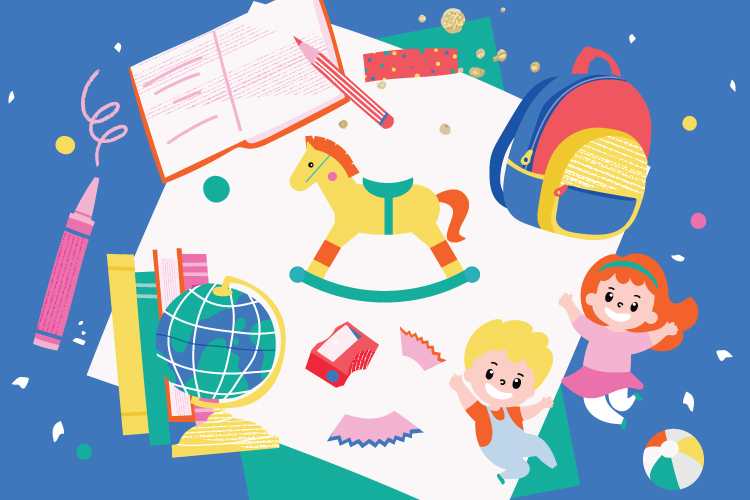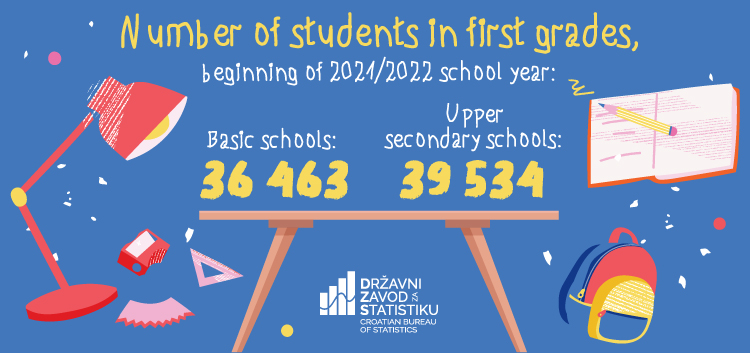September – time for new beginnings
Little ones are returning to kindergartens and students to classrooms. Check the latest data in the field of education.
After the summer and the long school holidays, September is for many the month in which they return to their daily routine. It is time to take out school supplies, recall the material learned, and boldly, calmly and decisively start acquiring new knowledge. A new school year is ahead of us, which will surely bring a lot of emotions – excitement, joy, and sometimes even a few tears, but, at the end, probably also a lot of feelings of pride and satisfaction.
Preparation for school starts in kindergarten
As students begin facing new school challenges, a lot of children begin or continue with what precedes school. September is the month in which nursery and kindergarten groups meet after the summer break. While some children will be separated from their parents for the first time, others will be welcomed by old friends. At the beginning of the 2021/2022 pedagogic year, preschool education programmes were attended by 142 440 children, out of which 48.4% were girls. Areas for play and learning were provided by 1 708 kindergartens and other legal entities implementing preschool education programmes[1]. A total of 14 505 kindergarten teachers and teachers played an irreplaceable role in this, out of which 98.9% were women.Kindergartens are places of care for children, where they can acquire new skills and make first friendships, even the smallest ones. At the beginning of the 2020/2021 pedagogic year, there were 29 153 children in nursery groups, out of which 51.8% were boys.
Most children, or more precisely, according to the data available at the beginning of the 2021/2022 pedagogic year, 78.8% of them spent eight hours or more in kindergartens. It is enough time for various activities, even for learning a foreign language. In the previous pedagogic year, 2020/2021, English was learnt by 7 041 children, German by 468 children, Italian by 219 children and Spanish by 32 children. It is a good preparation for what awaits them in basic school classrooms.
Big change for 36 thousand first-graders and 39 thousand first-year secondary school students
With the first day of the new school year, a new organisation of time begins. It is the period when homework will be written again, books will be read, mathematics will be practiced and exams will be prepared.At the beginning of the 2021/2022 school year, there were 1 986 regular basic schools and 96 basic schools for disabled children and youth in Croatia. A total of 308 126 pupils attended those schools.
Although each grade brings new school and life challenges, there is one group for whom September is a real turning point in life. Those are the pupils of first grades of basic schools. At the beginning of the 2021/2022 school year, there were 36 463 pupils, of which 18.9% were under the age of seven.

In addition to adventures and friendships, we certainly remember our school days for our teachers.
The number of teachers at the beginning of the 2021/2022 school year amounted to 36 261, of which 82.3% were women. The teacher/pupil ratio in the regular education was 1:8.7.
After overcoming all basic school challenges, the next step is the secondary school. It is a time when young people face more responsibilities, but also focus on their desires and interests. The very choice of a secondary school is the moment to make perhaps the first big choice in life. At the beginning of the 2021/2022 school year, young people in Croatia had 191 grammar schools, 260 technical and related secondary schools, 191 industrial and crafts secondary schools and 54 secondary art schools at their disposal. There were 45 upper secondary schools for disabled youth. All these upper secondary schools had a total of 146 687 students, of which there were 39 534 secondary school debutantes, that is, students of first grades, at the beginning of the 2021/2022 school year.
While some choose the secondary school closest to their place of residence, others will be forced to move to attend the desired school. The latter ones then may be accommodated in some of the 57 boarding homes for students in Croatia, which provided a temporary home for 7 508 beneficiaries in the 2021/2022 school year.
Whichever secondary school and field of education they choose, the knowledge and skills will be imparted to them by teachers, the number of whom amounted to 26 137 in the 2021/2022 school year, of which 67.8% were women.
Regardless of what stage of education they are in, we wish all children and students, as well as their parents and teachers, a happy beginning of the pedagogic and school year!
[1] Other legal entities include pre-school education programmes in basic schools, library playrooms, as well as in health, social, cultural, and sport institutions and organisations.